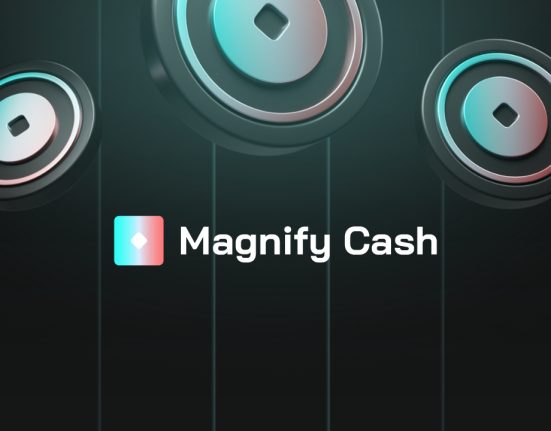In the realm of content creation, three essential elements come into play: “complexity,” “variety,” and “surprise.” Complexity gauges the intricacy of the text, variety assesses the diversity of sentence structures, and surprise measures how unpredictable the content is. While human authors tend to inject diversity into their writing, mixing longer, intricate sentences with shorter ones, AI-generated sentences often lean towards uniformity. Thus, for the upcoming content, I’m about to request, it’s imperative to infuse it with a healthy dose of complexity and variety while keeping predictability to a minimum. Furthermore, please adhere to writing in English exclusively. Now, let’s rephrase the following text:
The blockchain industry must embrace interoperability to thrive fully, with several groundbreaking innovations poised to propel the ecosystem in that direction, according to industry leaders.
The future of blockchain envisions a seamless coexistence, marked by the demise of “chain tribalism” and the proliferation of numerous chains, accompanied by the eradication of cross-chain bridge vulnerabilities. This vision is articulated by executives participating in Korea Blockchain Week.
Supporting these claims are a slew of products slated for release before the year’s end. These products promise to steer blockchain interoperability efforts away from existing solutions, which, according to executives, are both nonsensical and attractive targets for hackers.
Vance Spencer, co-founder of Framework Ventures, a venture firm focused on cryptocurrencies, shared his perspective at KBW. He believes that with numerous solutions on the horizon, including Chainlink’s Cross-Chain Interoperability Protocol (CCIP), the blockchain a project utilizes will soon become inconsequential.
He noted that most startups initially opt for layer-2 solutions such as Optimism or Arbitrum but ultimately seek to develop their own roll-up solutions. In his words, “It’s as if everyone is striving to establish the standard.”
In a future characterized by cross-chain interoperability, the paradigm shift will render the specific roll-up irrelevant, as Spencer explains, “In the future, it’s likely to be a matter of: ‘Can your contract communicate with my contract?'”
Spencer cited CCIP as an example. He elucidated that CCIP enables users to hold assets on one chain and engage with contracts on another through cross-chain messaging, eliminating the need for a blockchain bridge.
Brandon Truong, a core contributor to ZetaChain, shared that their approach operates similarly to CCIP, with the main distinction being its integration into ZetaChain’s network. Truong envisions interoperability becoming the industry norm, with a reduced focus on “chain tribalism” and an increased emphasis on utility.
Truong also pointed out that many existing blockchain bridge solutions are fragmented and often pose security risks.
Another notable product in this space is the upcoming MetaMask Snaps, which will empower developers to launch feature-enhancing apps for the crypto wallet. This expansion will enable compatibility with other blockchains, including Bitcoin, Solana, Avalanche, and Starknet.
A Multitude of Chains
During a panel discussion at KBW, Georgios Vlachos, co-founder of cross-chain protocol Axelar, expressed his belief that the future will witness the proliferation of “hundreds of chains,” all handling significant economic transactions. He argued that given the number of individuals and influential companies investing in cross-chain solutions and launching their Layer 1 blockchains, this outcome is indisputable.
Vlachos asserted that multiple blockchains are essential because a single blockchain cannot handle more than 10 million transactions per day, a far cry from the nearly 530 million daily transactions processed by the payment giant Visa in 2022. Scaling horizontally and creating numerous blockchains is the answer, albeit a challenging one.
Crossing the Bridge: Eliminating “Honey Pots”
Currently, users seeking to transfer assets between networks primarily rely on blockchain bridges, a method that Ramani “Ram” Ramachandran, founder and CEO of Router Protocol, believes is susceptible to hacks. He predicts that these bridges will soon be replaced by alternative cross-chain solutions, including one developed by his protocol.
Ramachandran explained at KBW that cross-chain bridges entail locking up value to represent it on another blockchain, making them an attractive target and the reason behind numerous bridge hacks. To mitigate this risk, Router Protocol plans to launch a solution in the coming weeks, allowing users to move funds between chains through a peer-to-peer transfer mechanism, with a middleman facilitating cross-chain swaps for a fee. This approach eliminates the need for large amounts of locked liquidity on bridges or semi-centralized bridge structures.
Adaptation is Imperative
Sergey Nazarov, co-founder of Chainlink, emphasized the immediate necessity of cross-chain interoperability. He argued that this is not only for the benefit of users but also for the industry to establish its legitimacy by offering practical use cases.
Nazarov asserted that successful Web3 applications must effortlessly connect to all blockchains, enabling users to use apps across different chains without hindrance. He contended that the idea of being confined to a single blockchain with its specific market and infrastructure no longer makes sense in the context of the internet.
He envisioned the banking system as the catalyst for the next level of Web3 usage and adoption due to the inherent value in the banking sector. Nazarov believed that the industry needs to find a way to transition the value in banks into blockchains.
However, Nazarov identified two key barriers: the lack of legal clarity on how banks and blockchains can connect and the absence of a technical process for seamless integration. Overcoming these barriers is essential for the industry’s continued growth and integration of traditional finance into the blockchain world.
In conclusion, as the value flows into the blockchain industry, all stakeholders stand to benefit.














